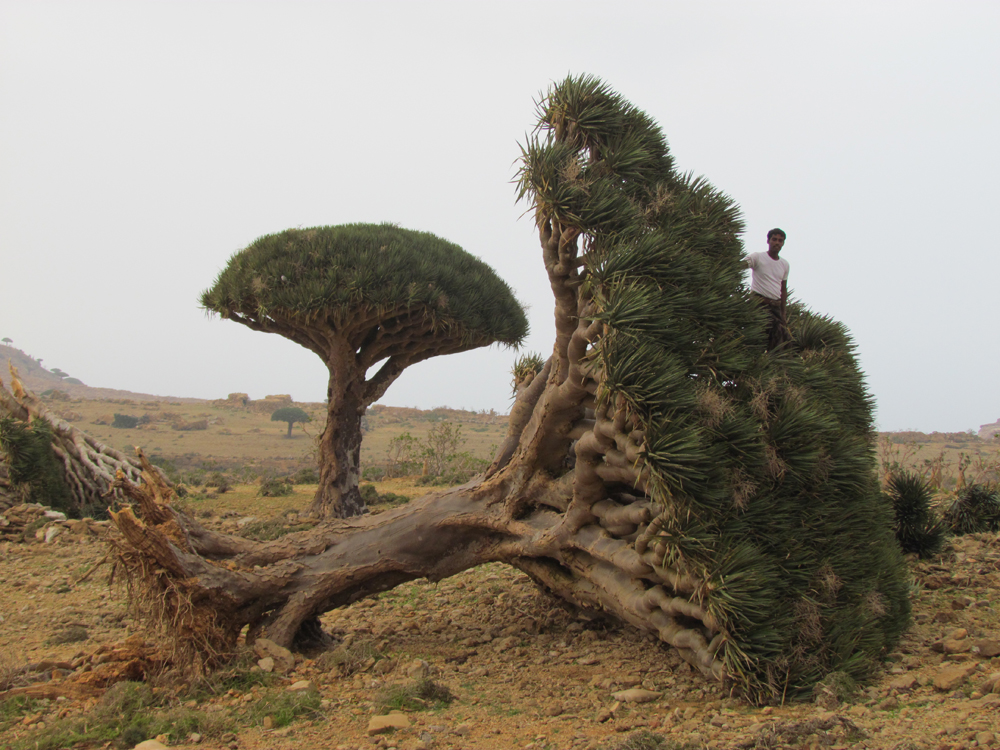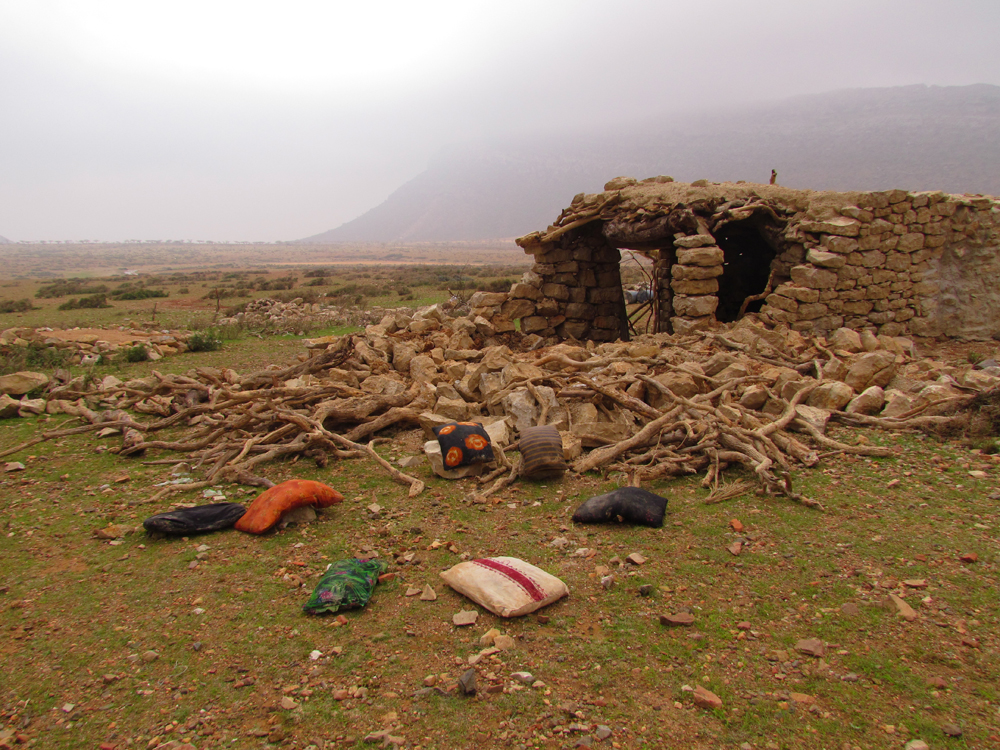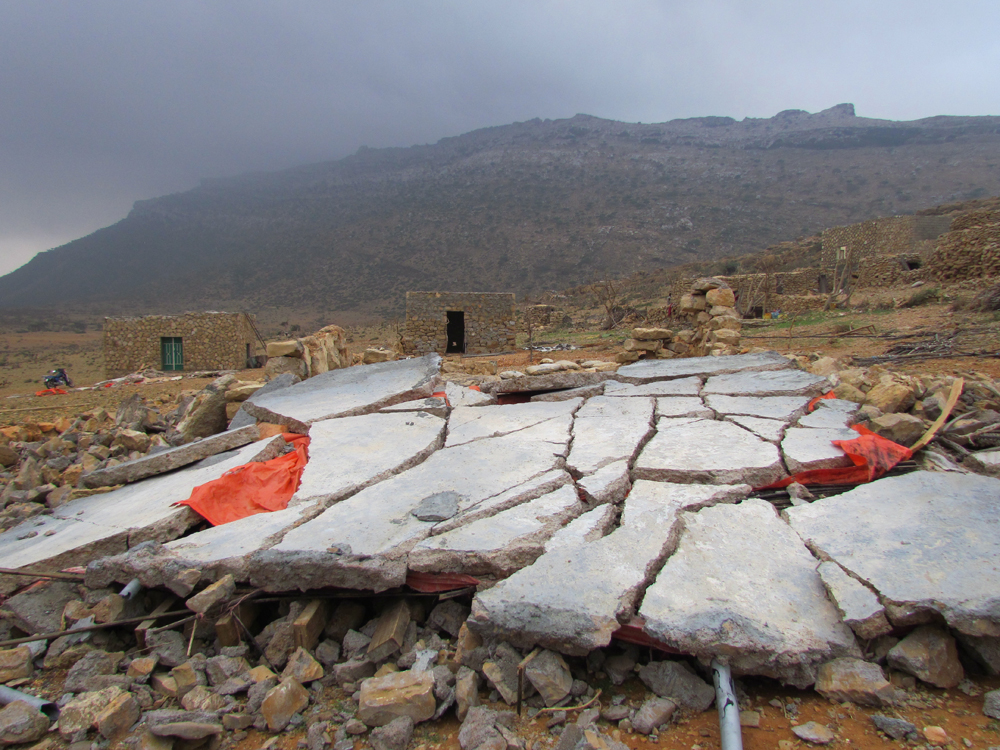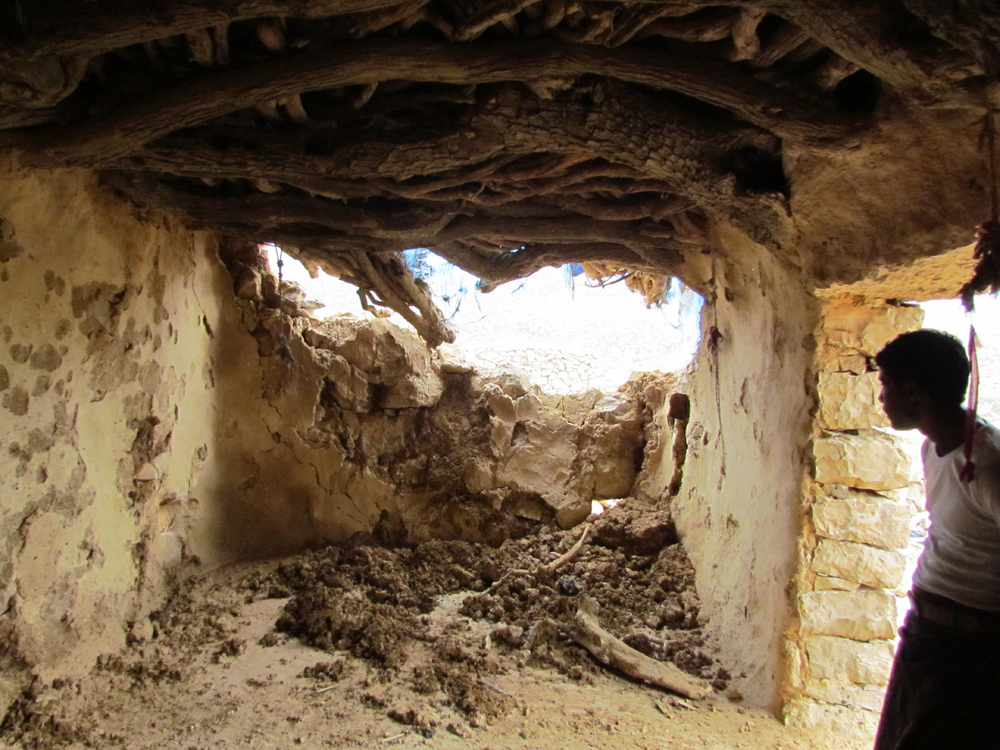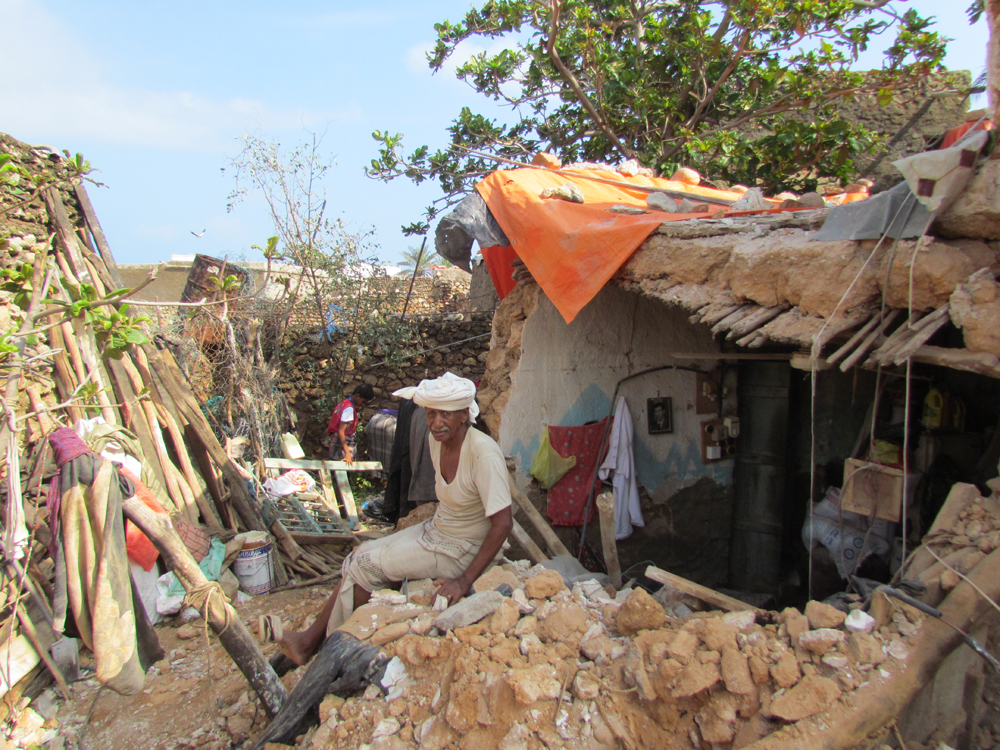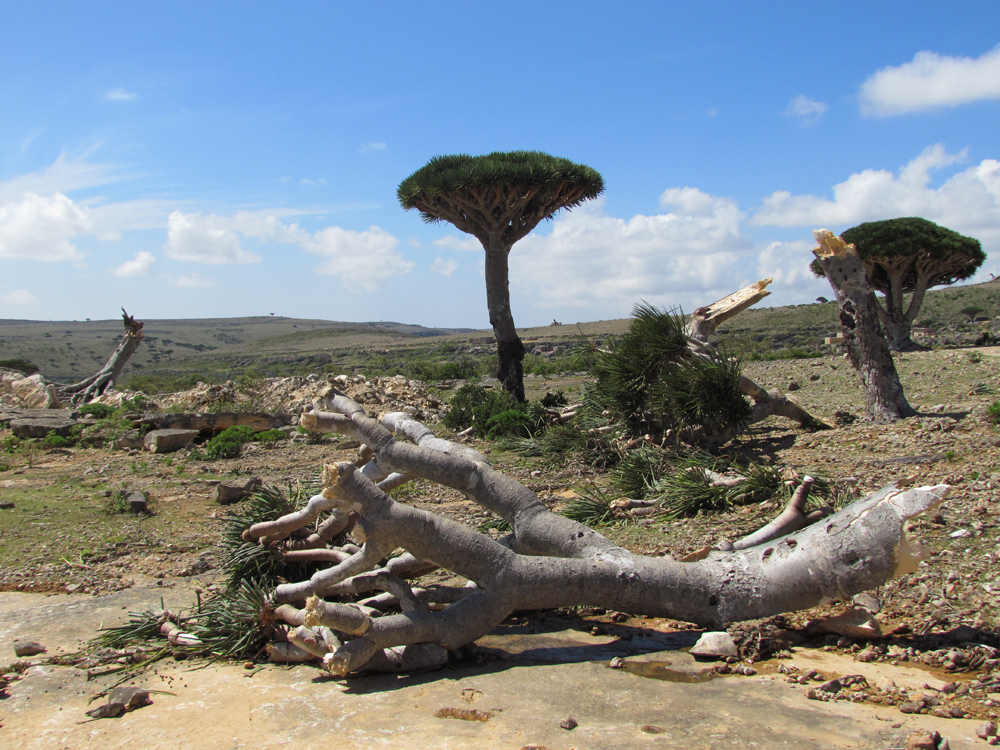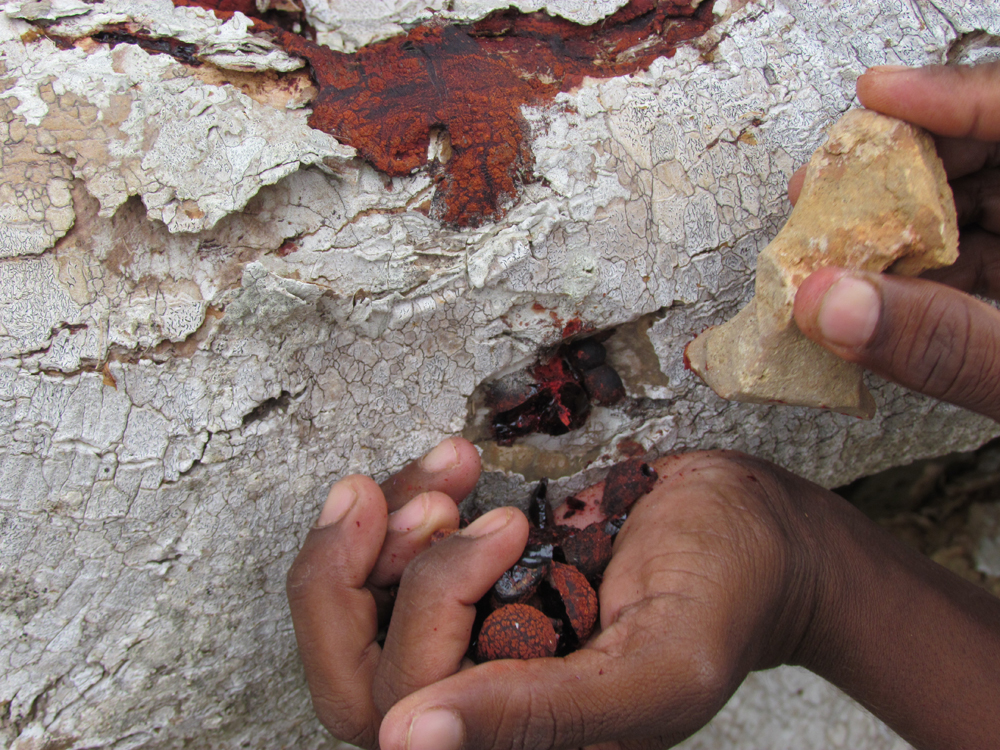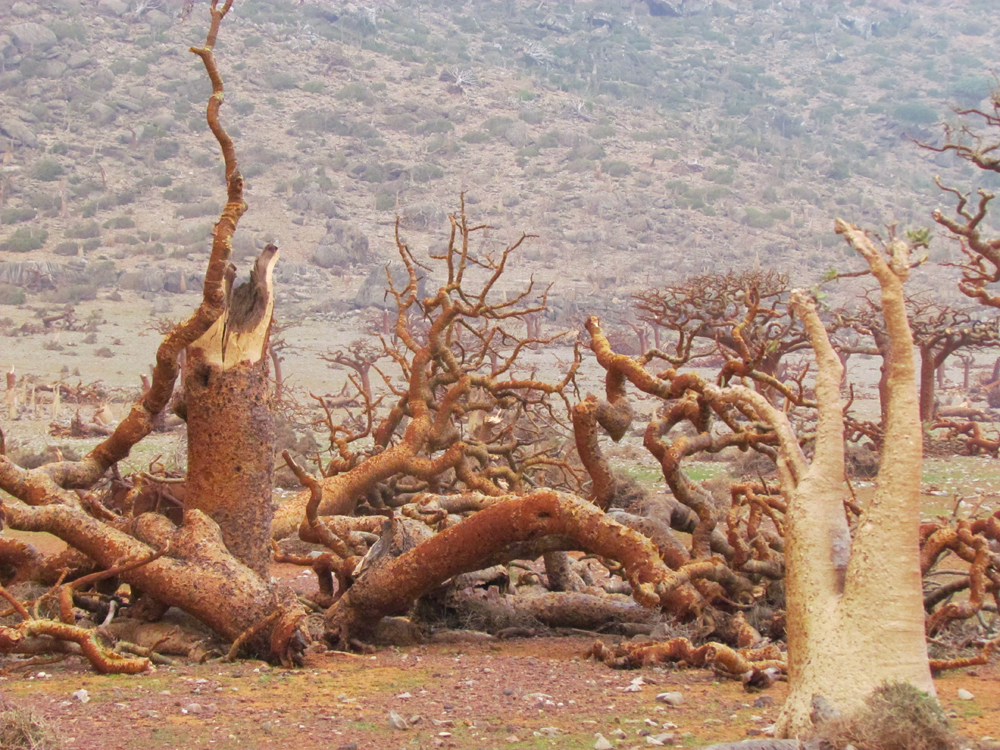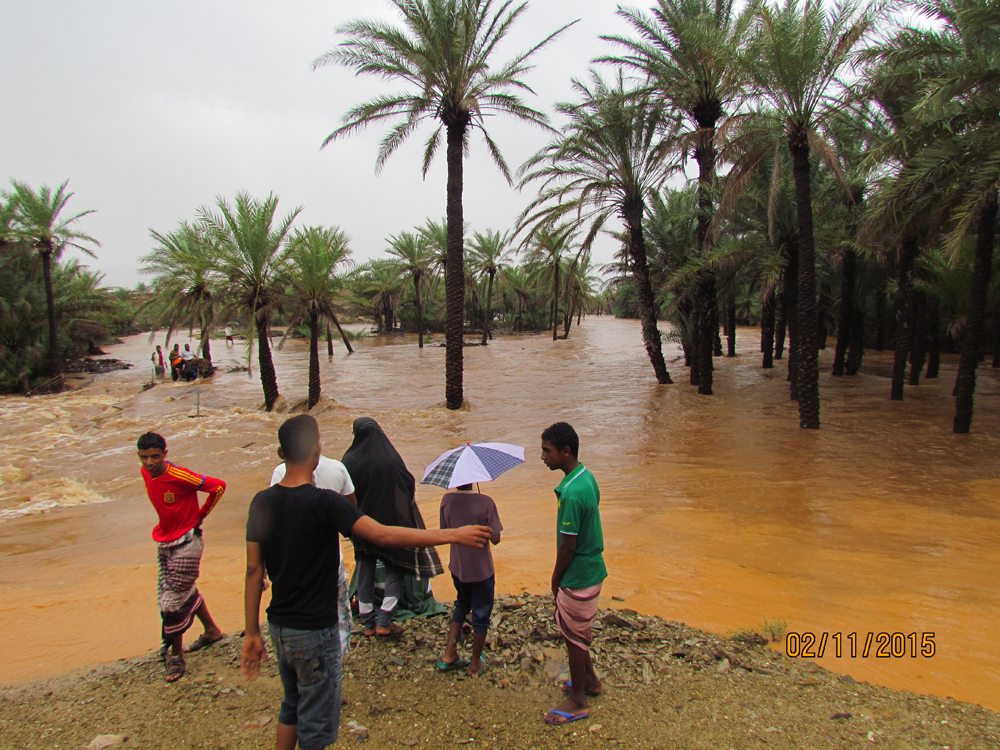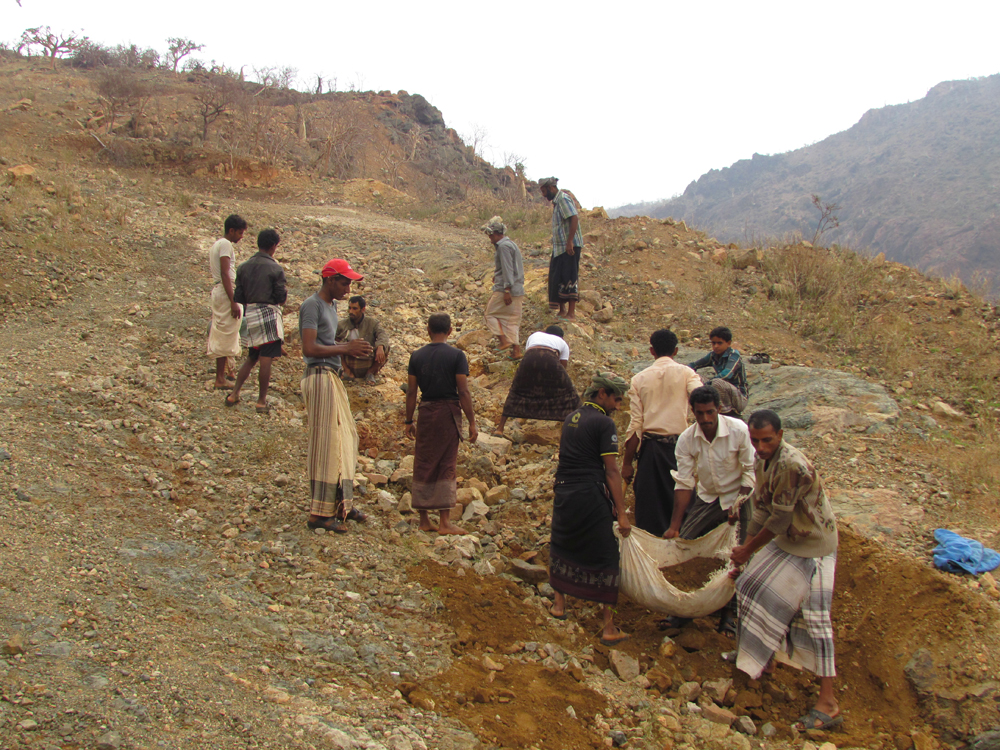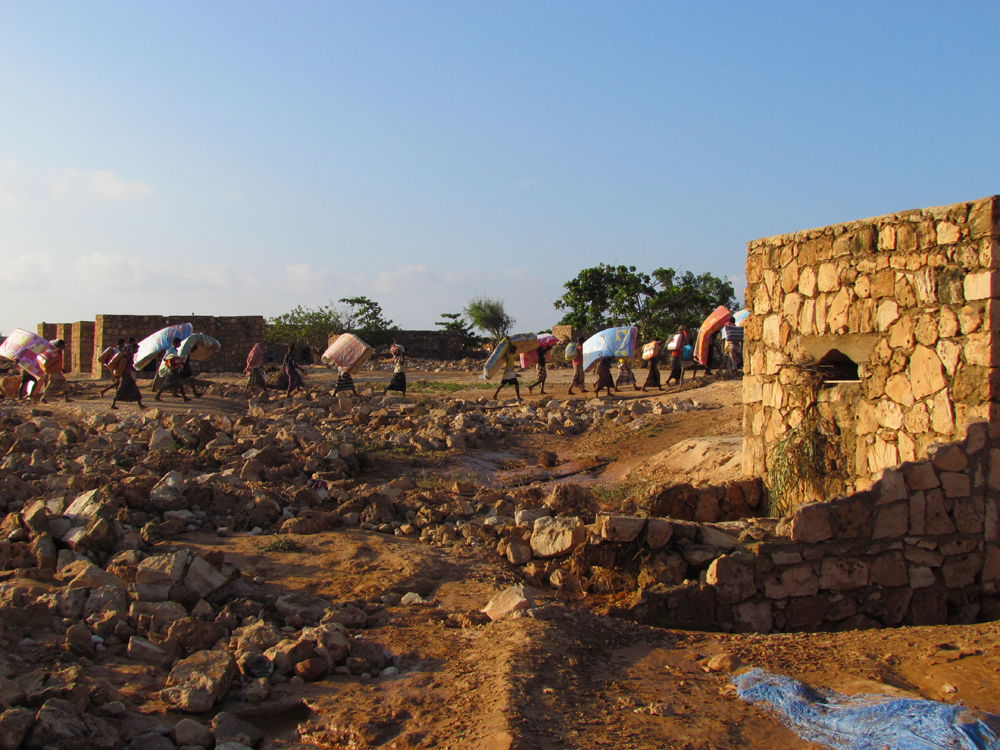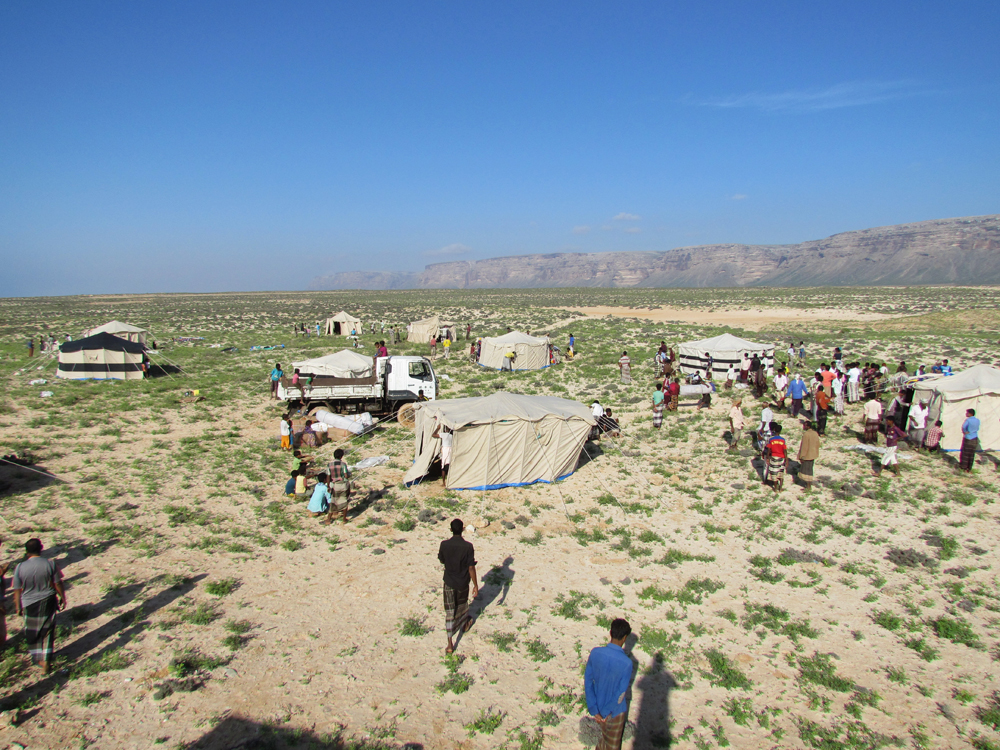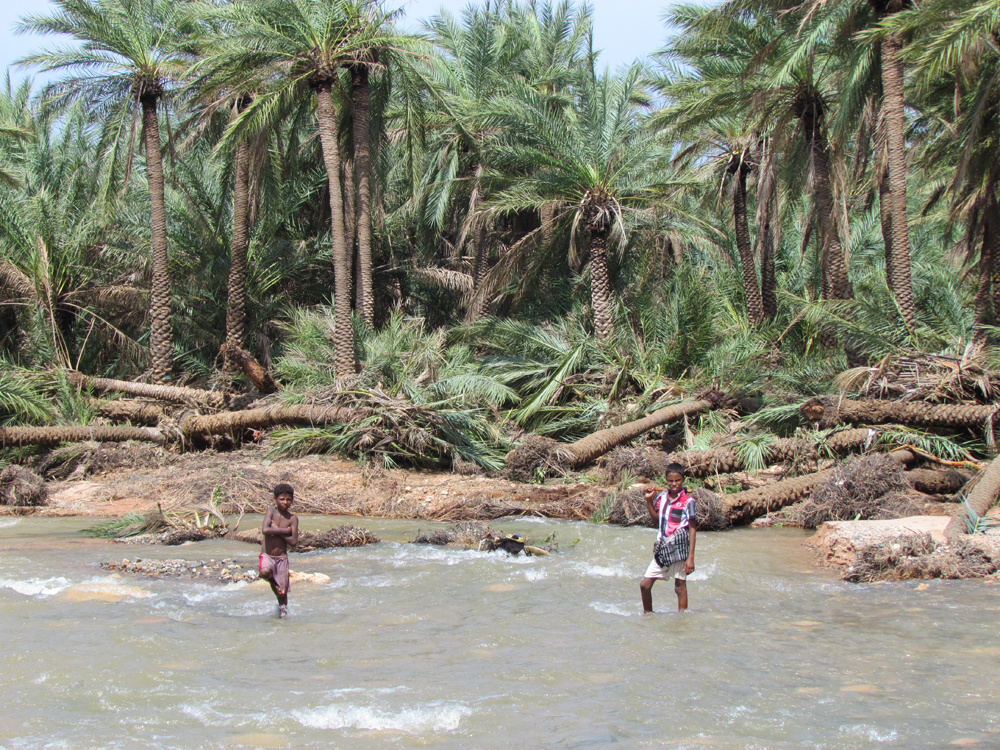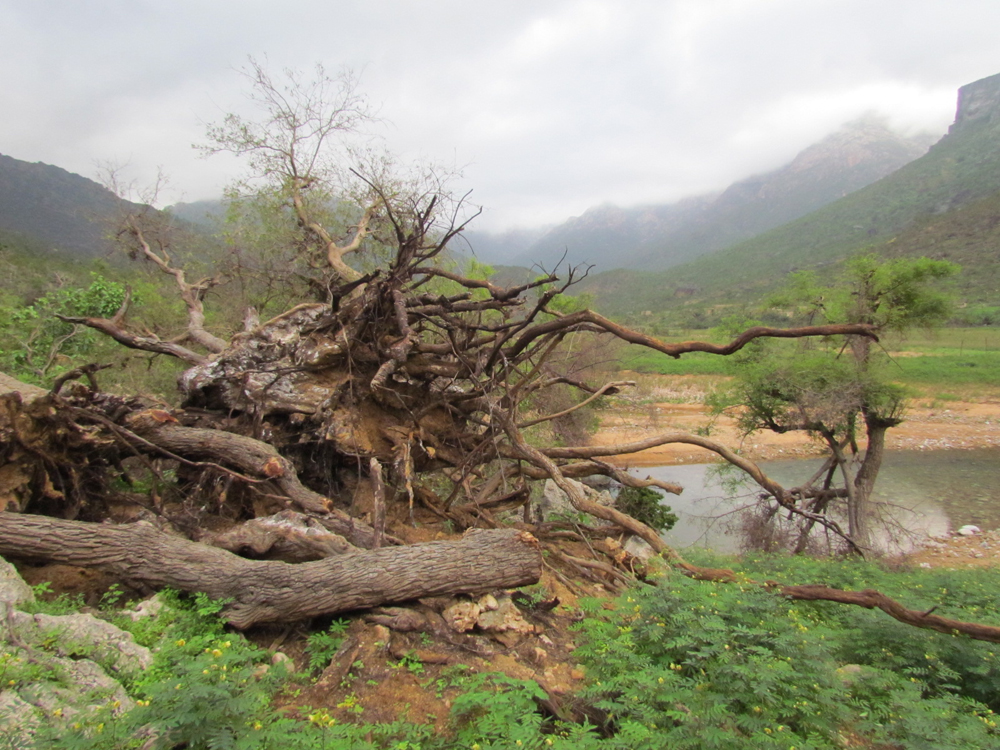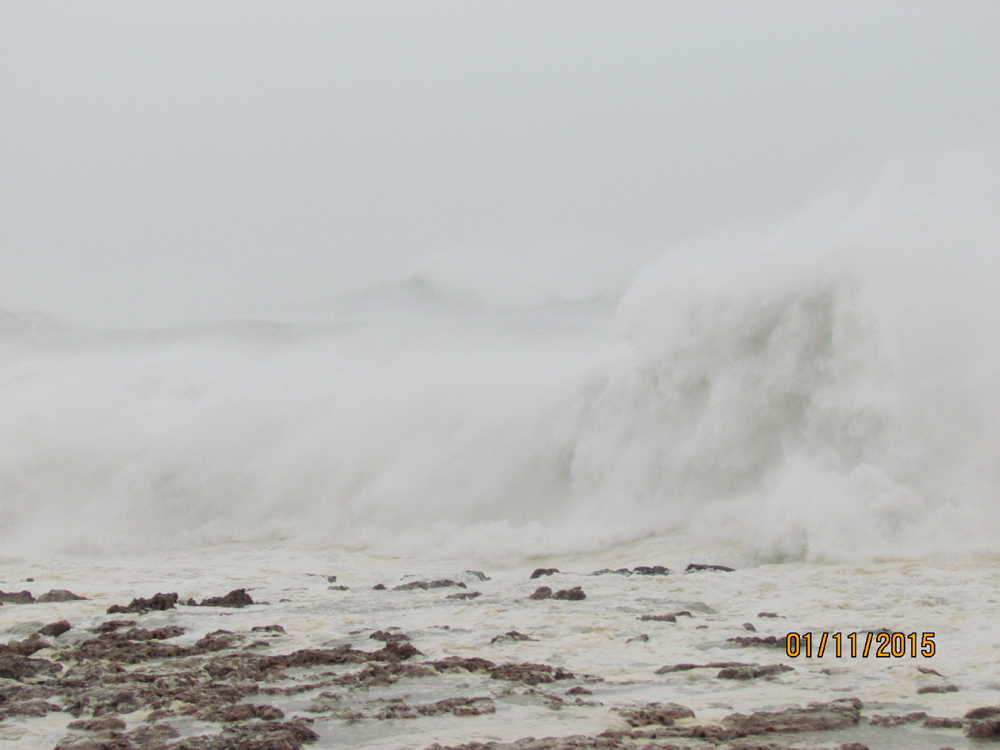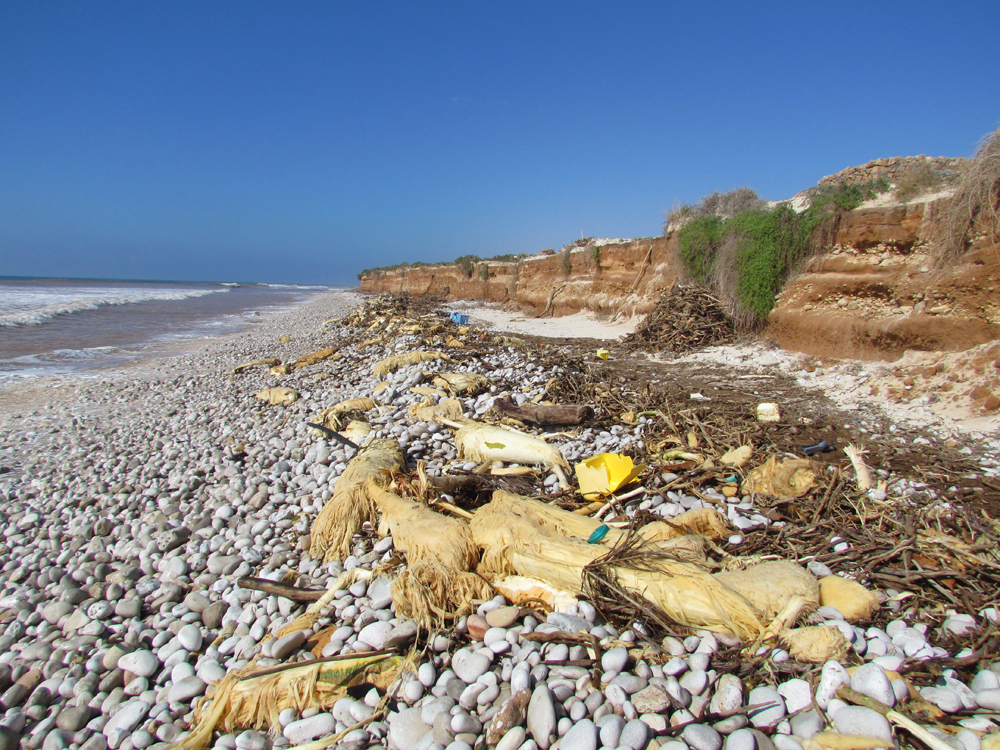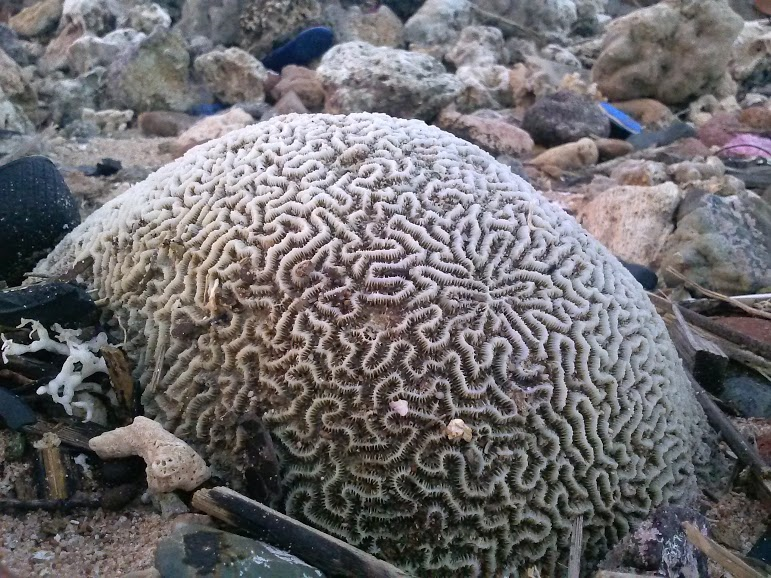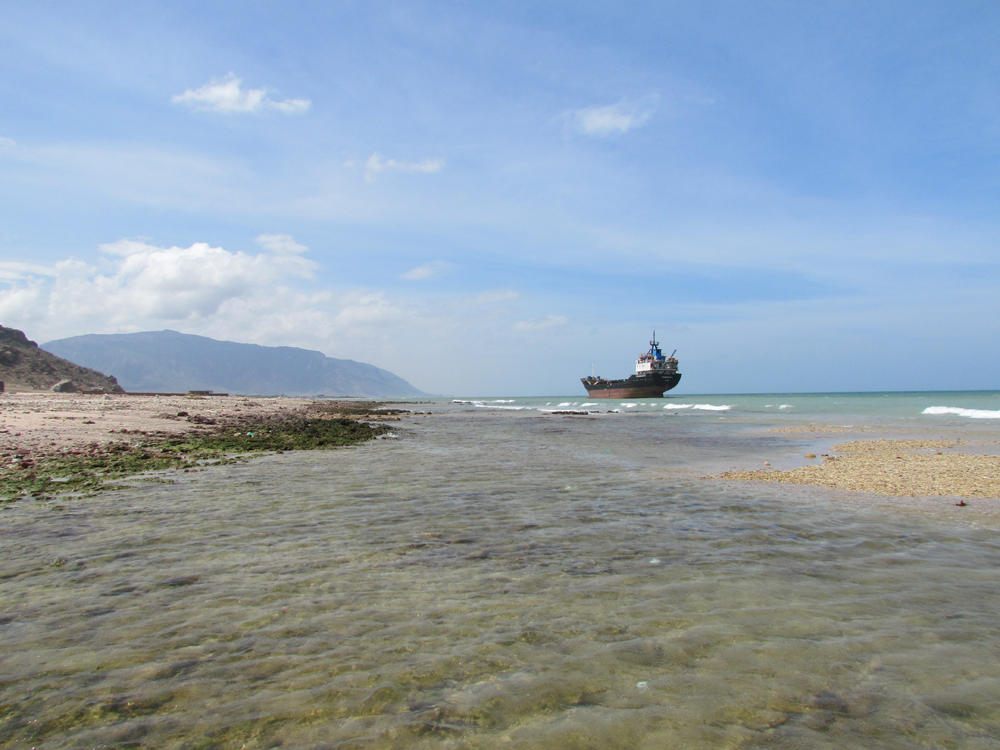Photo gallery: Cyclones hit Yemen’s remote Socotra Archipelago
Last November, Yemen’s World Heritage-listed Socotra Archipelago was hit by two rare cyclones within eight days, with drastic effects on the local population as well as its land and marine ecosystems. An expert on the ground was able to document the damage in the World Heritage site during and immediately after these extreme weather events for IUCN, International Union for Conservation of Nature
The remote Socotra Archipelago is situated 380 kilometres south of mainland Yemen and 240 kilometres east of the Horn of Africa. Intense storms are very rare in this region of the Indian Ocean in the Arabian Sea.
The two cyclones, Chapala and Megh, left Socotra and its population wounded, killing 18 and injuring 200 people and displacing 4,000 inhabitants, according to information received by IUCN. They completely demolished 1,500 houses and damaged a further 2,300 homes. Infrastructures such as roads, electricity and water facilities were badly damaged or destroyed, affecting people in remote villages and towns.
The storms also damaged reefs, eroded soil and uprooted many rare plants that are only found on Socotra, including the iconic dragon's blood tree.
Chapala, the first cyclone to hit Socotra on 1 and 2 November 2015, forced the evacuation of an estimated 18,000 people – more than a third of the island’s population. It was the second most intense hurricane to date to strike Socotra, with wind gusts of 77 km/h and a 6 m storm surge.
It was followed a week later by Megh, which further damaged the island’s hospital and power station. The storm ravaged the island with wind gusts of up to 120 km/h and torrential rainfall with up to a 2 m storm surges. Unlike Chapala, the eye of the Megh storm passed directly above Socotra.
Socotra Archipelago is listed as a natural World Heritage site for its exceptionally rich and unique flora and fauna. One of the most biodiversity rich and distinct islands in the world, it has been termed the “Galápagos of the Indian Ocean”.
Composed of four islands and two rock islets, with Socotra being the largest island, Socotra Archipelago boasts a large density of endemism: 37% of Socotra’s 825 plant species, 90% of its reptile species and 95% of its land snail species do not occur anywhere else in the world.
The site also supports globally significant populations of land and sea birds (192 bird species, 44 of which breed on the islands while 85 are regular migrants), including a number of threatened species. The marine life of Socotra is also very diverse, with 253 species of reef-building corals, 730 species of coastal fish and 300 species of crab, lobster and shrimp.
IUCN is the official advisory body on natural World Heritage. It will advise the World Heritage Committee on the necessary conservation action to protect Socotra Archipelago, as well as 60 other natural and mixed World Heritage sites affected by threats to be discussed during the 40th session of the Committee in Istanbul, Turkey, from 10-20 July 2016.
